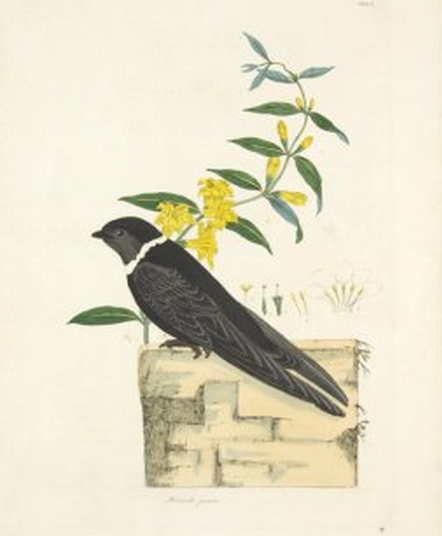Small and fragile, birds have always posed a challenge to scientific collectors, who over the centuries have developed a startling range of techniques for taking them more or less intact and whole. Indeed, the smallest species were often secured by shooting them not with lead but with sand or ash, in hopes of minimizing the damage to tiny feathers and tender skin.
Sometimes, however, intentionally or otherwise, less punctilious methods have been brought to bear. In the early spring of 1917, for example, M.A. Carriker, Jr., unexpectedly obtained three specimens of the white-collared swift on the grounds of his in-laws’ plantation in Santa Marta, Colombia:
While blasting out the intake for a flume at Cincinnati on March 19, 1917, a colony of this large swift was discovered nesting in a shallow cavern behind a waterfall. The place was absolutely inaccessible, so that no idea of the number of nests could be had. Only one nest, which happened to be near the top, was secured, together with the occupants, which had been stunned by the blasting, and proved to be an adult female and two recently hatched young.


